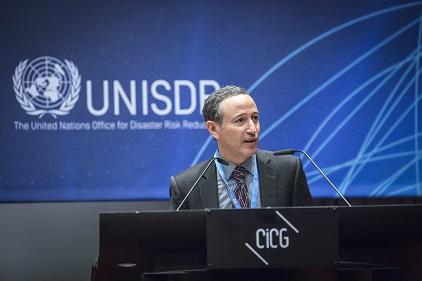The UNISDR Science and Technology conference on the implementation of the Sendai Framework for Disaster Risk Reduction (2015-2030) was held at the Centre for International Conferences in Geneva (27-29 January 2016). The conference gathered together more than 1,000 researchers, policy makers, and practitioners to agree the science and technology roadmap for implementing the Sendai Framework for DRR.

The plenary session was opened by Dr Robert Glasser (head of the UN Office for Disaster Risk Reduction) during the plenary session, highlighting the importance of science and technology in not just the implementation of the Sendai Framework, but across many of the 2015-2016 international agreements. In 2015, such events as the Sustainable Development Goals, COP21, and The Third International Conference on Financing for Development in Addis Ababa all highlighted the central importance of DRR for decreasing poverty and implementing sustainable development. All of these agreements rely upon the support of science and technology for decision-making.
Glasser emphasised the need and ability we have to do more to decrease economic and human losses from disasters. He was echoed by Dr Pichet Durongkaveroj (Minister of Science and Technology for Thailand) who emphasised the need for science and technology to take a leading role in the world in helping to improve our lives.

“More than 300 billion people are affected by natural hazard-related disasters on average each year” – Dr R Glasser
It was interesting and encouraging to acknowledge how much science and technology has and is developing. However, the root causes of disaster risk (poverty and inequality) were rarely mentioned in the conference. The main discussions focused on the physical sciences, risk assessments, and technology. There were multiple calls for the consolidation of our knowledge, and better communication of what we already know, before we move forward to re-producing what already exists. However, it must be acknowledged that gaps do exist in our knowledge base, and new data is needed due to inequalities in data coverage.
A common theme throughout the conference was the difficulty of delivering and communicating scientific findings to the government and the public. Glasser held up the IPCC’s approach to delivering complex climate change information as an excellent example of communicating science; it lays out compelling and advisory information, including a section within the report which bridges the science/policy gap, and is written in layman’s terms. Links between science, technology and policy need to be improved. We need to connect with users of technology to ensure understanding and communication of knowledge. The need for hybrid expertise/translators/communicators became a recurring theme, crossing multiple divides: science/research, policy/decision makers, practitioners/NGOs, and the community/locals/those at risk.
This communication of knowledge cannot be one-directional. Glasser highlighted the need to understand the pressures as well as the problems faced by end-users. For example, we need to be able to quantify the current costs, and then the future costs (particularly due to changes in climate) to be able to engage with finance ministers on the importance of DRR. More detailed data is needed to focus the attention of decision-makers, particularly related to what they value. Whilst it can often feel contrary to the values of humanitarians, making the argument with support of economic cost-benefit analyses, and using appropriate language and terminology, can get budgets for DRR integrated into policy, therefore saving lives.
The majority of the sessions I attended focused on presented research, and specific case studies, which were rarely related back to the Sendai Framework. I felt that opportunities to discuss and contribute to the roadmap were few, and perhaps a better approach would have been to gather 100-200 expert scientists, practitioners, and policymakers together to discuss the roadmap by sections, and contributing feedback and comments to the main panel.
Whilst the conference did not close with an agreed roadmap, the three days were a valuable networking opportunity for future collaborative work, and the sessions highlighted the main challenges and opportunities for DRR in the immediate future.